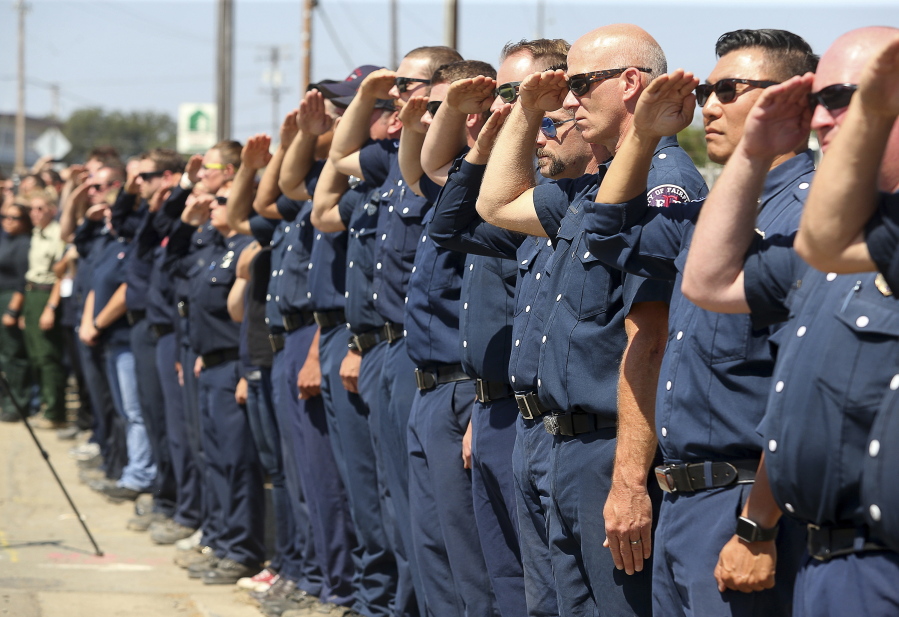LOS ANGELES — The largest fire in California history continued to grow Wednesday while firefighters worked to protect threatened communities.
As of Wednesday morning, the Ranch Fire had consumed 314,925 acres and was 64 percent contained. It has destroyed 147 homes so far. One firefighter, Matthew Burchett, 42, of Draper City, Utah, has died battling the fire.
The Ranch Fire is one of two fires that form the Mendocino Complex Fire. Firefighters were still monitoring the smaller of the two, the River Fire, which as of Monday was 100 percent contained.
Residents around Clearlake were allowed to return home, but new evacuation orders were announced in the last few days for communities to the east and west of Mendocino National Forest, including Stonyford, Lodoga and Potter Valley.
That presents another challenge for firefighters. Unlike the Clearlake area, which is fairly accessible by road, these communities are farther into the forest and surrounded by more rugged terrain, said Cary Wright, a Cal Fire spokesman.
Wright said persistent low humidity has allowed the fires to continue growing — by 9,400 acres on Tuesday and 1,300 acres Monday. On Wednesday, firefighters were expecting to get a brief break in the hot weather.
Temperatures were expected to drop and humidity levels to increase Wednesday and Thursday, he said. Nighttime humidity rose significantly Tuesday for the first time since the fire started, Wright said.
Firefighters count on the drop in temperature and increase in humidity that usually occurs naturally overnight to allow them to make progress. But that hasn’t been happening in Lake County recently. Nighttime humidity levels have consistently been in the teens to 30 percent range. Tuesday night, the humidity reached 80 percent.
Despite the good news, the fight is far from over.
“We’ve had numerous calls from residents, saying, ‘Why is it still smoky?’ or ‘Is there another fire?’ ” Wright said. Shifting winds blow smoke to different areas at different times, and many people mistakenly think that because they’ve been allowed to return home, the fires aren’t burning anymore, he explained.
“Lake County communities have experienced a lot of fires, so as you can imagine, those folks are still on edge,” he said.
Firefighters are still struggling with the terrain as the fire approaches Snow Mountain Wilderness. They are using natural and manmade barriers ahead of the fire to the north, and are placing most on-the-ground resources to the east and west where homes are threatened, Wright said.
The Mendocino Complex Fire has now expanded to four counties, Wright said. As of Saturday, the Ranch Fire has surpassed last winter’s Thomas fire’s acreage, making it the largest single fire in California history.



